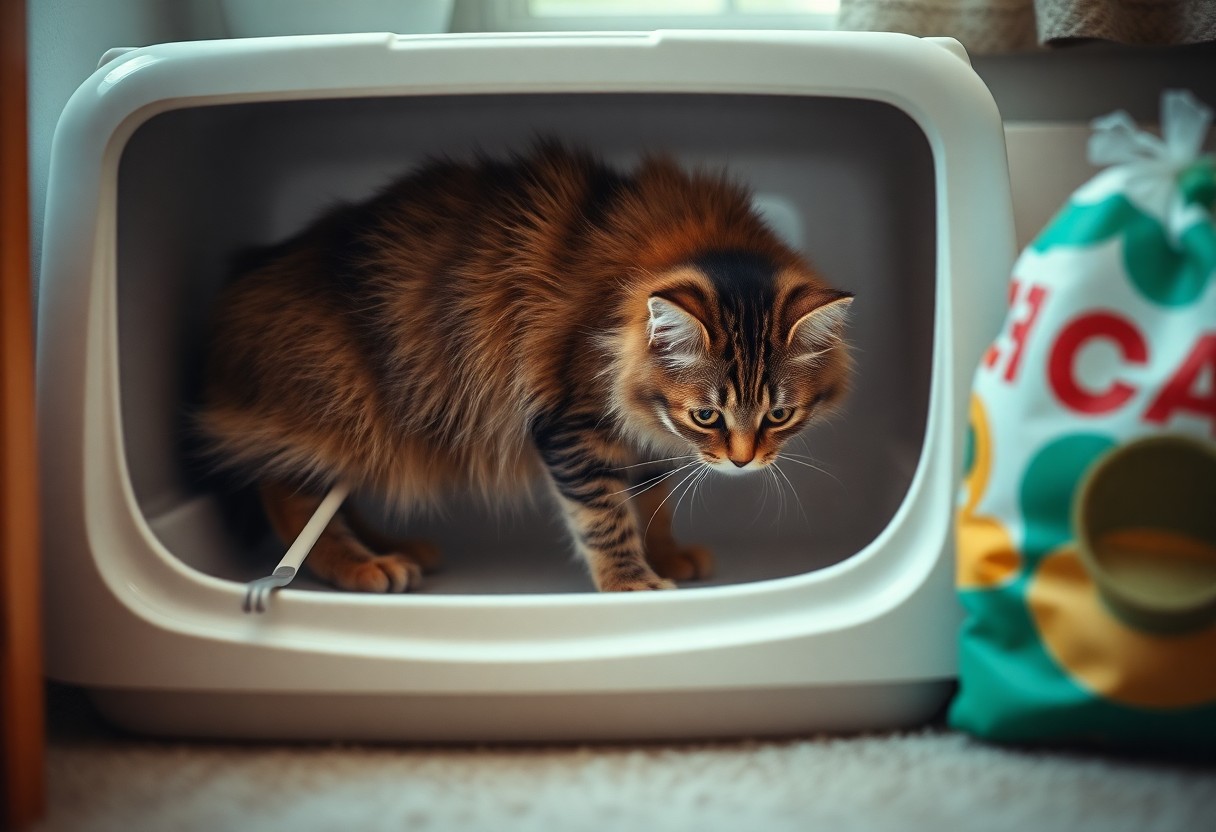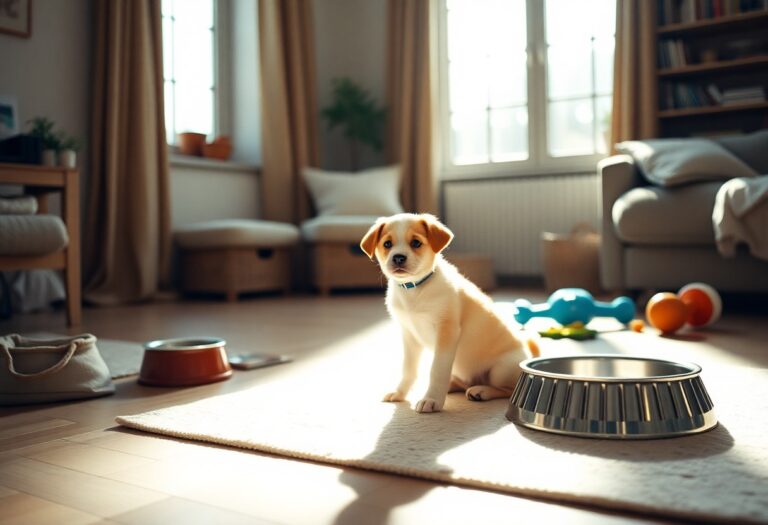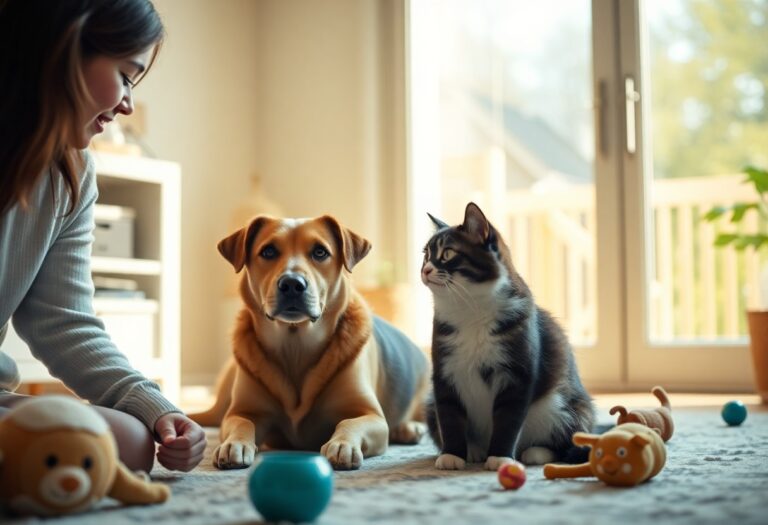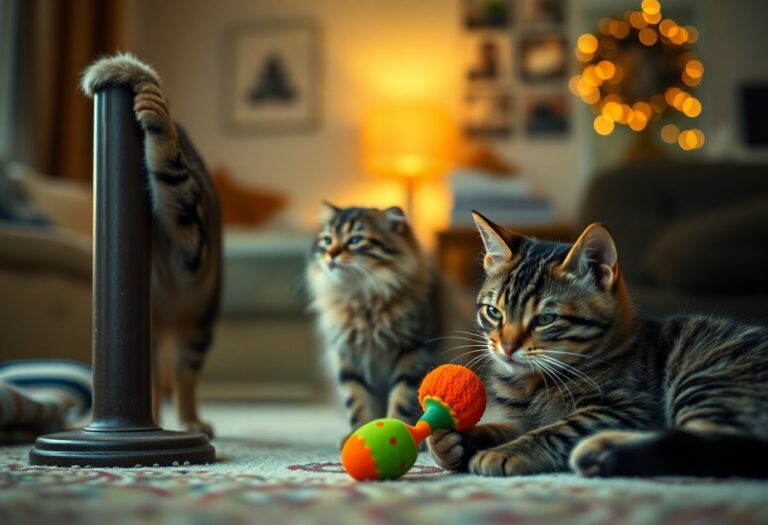Many pet owners worry about how to get their feline friends to use the litter box properly. Thankfully, teaching your cat this crucial habit can be simple and rewarding. By creating a comfortable environment and maintaining consistency in your training methods, you can help your cat understand where to go. In this guide, you’ll learn effective techniques to encourage your cat to use the litter box, ensuring both you and your pet enjoy a clean and stress-free living space.
Choosing the Right Litter and Box
Comparing Litter Materials: Clay, Biodegradable, and More
Different litter materials can significantly influence your cat’s comfort and your maintenance efforts. Clay-based litters are the most commonly used, mainly due to their excellent clumping ability and odor control. You’ll find clumping and non-clumping options; clumping ones can help you easily dispose of waste without changing the entire box every time. On the downside, some cats may find the dust created by certain clay litters irritating to their lungs.
On the other hand, biodegradable litters made from materials like corn, wheat, or recycled paper offer an eco-friendly alternative. They generally have less dust and can be less irritating to some cats. However, they may not always clump as effectively as clay litters. Making a choice may depend on your cat’s preferences and any sensitivities, so be prepared to experiment a little to find the best fit for your feline friend.
Comparing Litter Materials
| Material | Key Features |
|---|---|
| Clay (Clumping) | Excellent clumping, strong odor control, but can be dusty. |
| Clay (Non-clumping) | Absorbs moisture well, but requires full change frequently. |
| Biodegradable (Corn, Wheat) | Eco-friendly, low dust, but may not clump as effectively. |
| Recycled Paper | Soft texture, low dust but often less absorbent. |
Selecting the Perfect Box Style for Your Cat
Picking the right litter box style is vital for ensuring your cat feels comfortable and willing to use it. A covered box can provide privacy and minimize odors, but not all cats enjoy the enclosed space. Many prefer an open box that offers room to move around freely. Size matters too; ensure the box is large enough for your cat to turn around comfortably—generally, it should be at least one and a half times the length of your cat from nose to tail. If you have multiple cats, consider providing multiple boxes to avoid territorial disputes and ensure everyone has access.
Your cat’s behavior can guide your choice. Observe your cat’s preferred places for elimination; do they like high sides or a more open environment? You may also want to think about whether the box’s design allows for easy usage; higher sides may prevent litter spills but can be a challenge for older or less agile cats. Pay attention to details like ease of cleaning and the overall look of the box, as you’ll want functionality combined with aesthetic appeal, making litter box maintenance a seamless part of your routine.
Setting Up a Litter Box Sanctuary
Ideal Location: Privacy vs. Accessibility
The location of your cat’s litter box can greatly impact their willingness to use it. Look for a spot that offers privacy, such as a quiet corner or a dedicated room away from high-traffic areas. Cats are instinctively cautious creatures; they prefer a space where they feel safe and secure while doing their business. However, ensure that this location remains accessible at all times. Avoid placing the box in locations where they may feel trapped, such as behind doors or in a cramped area.
Placing the litter box near your cat’s food and water dishes is not advisable, as cats naturally avoid eliminating near their feeding areas. Aim for a balance between privacy and accessibility, keeping in mind that the box needs to be easy for them to access, especially for younger or older cats who may have mobility issues. A well-placed litter box can significantly enhance your cat’s overall comfort and encourage consistent usage.
Creating a Peaceful and Inviting Environment
Transforming the litter box area into a serene oasis is vital for your cat’s comfort. Incorporate elements that enhance the space, such as a gentle lighting source or a cozy mat in front of the box. Reducing noise and distractions in the vicinity will also help create an inviting atmosphere. Cats may be deterred by sudden movements or loud sounds, so consider a location away from household activity zones—including laundry machines or regular foot traffic.
Introduce familiar scents to your cat’s litter box area; a soft blanket or a piece of your clothing might help them feel at home. If your feline displays reluctance towards using the box, revisit this space regularly and pay attention to their preferences. Establishing a consistent, peaceful environment not only encourages usage but also fosters a positive relationship between your cat and their litter box sanctuary.
Introducing Your Cat to the Litter Box
Timing the Introduction: When is Best?
Introduce the litter box right after bringing your new cat home. This is typically the best moment as they will be exploring their new environment and adjusting to it. However, for a kitten, waiting until they are around 3-4 weeks old, when they start to develop better control over their bodily functions, is vital. During this time, they tend to be more receptive to learning how to use the litter box effectively.
For adult cats, particularly those who are rehomed, patience during the introduction phase can yield better results. Allow them some time to settle in before placing them in front of the litter box. This allows them to feel more comfortable in their new surroundings, leading to a more successful introduction when you finally set the box in front of them.
Using Positive Reinforcement: Treats and Praise
Utilizing positive reinforcement can transform the litter box experience into a rewarding one for your cat. When you notice your kitty sniffing around or showing interest in the box, offer them verbal praise or a small treat. If the cat successfully uses the litter box, celebrate the accomplishment with enthusiasm to reinforce their behavior. The association of the litter box with positive experiences will encourage them to return again and again.
Consistency is key. If your cat avoids the box after several introductions, don’t punish them. Instead, try to observe their behavior and identify any signs of discomfort or hesitation. This insight can help you adjust the setup, be it the location of the box or the type of litter being used. The goal is to create a positive environment where your cat feels secure, leading to successful litter box usage.
Involving treats in the training can also solidify their newfound habits. Keeping small, easily digestible treats nearby can serve as immediate rewards whenever they step into or use the litter box. Always choose treats that your cat loves; this makes the reward system effective and enjoyable. Over time, they will associate good behavior with pleasant experiences, reinforcing the habit of using the litter box.
Troubleshooting Common Litter Box Problems
Addressing Aversion: Why Cats Refuse the Box
Your cat may refuse to use the litter box for several reasons, often stemming from a dislike of the litter type, the box’s location, or even the box’s cleanliness. If your feline friend has had a previous negative experience with the box, such as a sudden noise that scared them while using it, they may develop an aversion and choose to go elsewhere. Pay attention to your cat’s behavior and ensure that their litter box is a peaceful space where they feel safe and secure.
Preventing Accidents: Tips for Successful Training
Foreseeing possible accidents can help you create a structured environment that encourages your cat to use the litter box consistently. For one, establish a reliable routine to keep your cat in a good habit; cats are creatures of habit and respond well to regularity in their day. Encourage litter box use by placing your cat in the box after meals or upon waking, which are common times when a cat instinctively needs to go.
Offering positive reinforcement when your cat uses the box successfully will make them associate the experience with pleasure, building a stronger habit over time. Always make sure to reward them with treats or praise immediately after they use the box. If they have an accident outside of the box, clean it up thoroughly to remove the scent and discourage repeat incidents. This creates an environment that’s more conducive to litter box use.
- Establishing a consistent routine can reduce accidents.
- Positive reinforcement, such as treats, builds good habits.
This structured approach helps nurture a positive association with the litter box, making it a preferred option for your cat.
- Regular cleaning of the litter box is crucial for encouraging consistent use.
- Experimenting with different litter types can lead to finding one your cat prefers.
This ensures that your cat has a pleasant experience and develops a lifelong habit of using the litter box.
Advanced Techniques and Behavioral Insights
Taking your cat’s litter box training to the next level involves utilizing advanced techniques combined with an understanding of feline behavior. Cats possess unique traits that can be observed and harnessed to create a more tailored experience during the training process. Start observing your cat’s habits and preferences to identify patterns that will help refine your approach. Adjustments based on their behavioral cues could significantly enhance the effectiveness of your training methodology.
- Consider the texture of the litter you are using. Some cats prefer finer textures, while others like coarser varieties.
- Pay attention to the litter box’s location. It should be accessible but not in a high-traffic area where your cat feels exposed.
- Evaluate the size of the litter box. A box that is too small can discourage usage, while one that is too large may be intimidating.
- Observe your cat’s bathroom habits. If they tend to dig or scratch, provide ample litter to facilitate this behavior.
- Experiment with different box designs. Some cats favor open boxes, while others feel secure in covered boxes.
| Observation | Insights |
|---|---|
| Preference for litter texture | Choose litter that matches your cat’s favored texture to improve usage. |
| Box location | Place the litter box in a quiet, low-traffic area for a more comfortable experience. |
| Box size | A properly sized box fosters a sense of safety and encourages regular use. |
Understanding Your Cat’s Preferences: Observations to Make
Individual preferences are often the key to successful litter box training. Feline behaviorists suggest that noting your cat’s specific reactions to different aspects of the litter box can significantly influence their willingness to use it. For example, if you notice your cat avoiding a particular type of litter, it may be beneficial to switch to a different option. Keeping a journal of your observations can help track patterns and preferences over time.
Moreover, monitoring your cat’s body language can yield valuable insights. If your cat spends time smelling or digging in the litter before using it, this may indicate a desire for a more natural substrate. Cats are inherently playful, so enabling them to engage in this behavior can make the experience more inviting. Adjustments based on these observations can directly correlate with whether your cat feels comfortable or apprehensive about using the litter box.
Adjusting the Training Approach Based on Feline Psychology
Feline psychology is integral to modifying your training approach effectively. Understanding that cats are territorial animals allows you to cater the litter box setup to their innate behaviors. Creating a space that feels secure, free from distractions or disturbances, can lead to more successful litter box training. You might find that incorporating a second litter box will cater to their instinctual need for safety during bathroom visits.
Furthermore, social dynamics play a role in litter box habits. If you have multiple cats, competition for resources like the litter box can lead to reluctance or avoidance. By placing multiple boxes in separate locations, you alleviate the stress of sharing, making each cat feel more secure and willing to use their designated area. Tailoring your approach based on these psychological insights ensures that your cat not only learns to use the litter box but feels comfortable and relaxed doing so.
Final Words
The process of training your cat to use the litter box can be a rewarding experience for both you and your feline companion. By selecting the right type of litter box, choosing a suitable location, and ensuring it is clean and accessible, you create an environment that encourages positive behavior. Take the time to observe your cat’s preferences and be patient during the training process; every cat has its unique personality that may influence how quickly it adapts to using the litter box. Establishing a routine and providing positive reinforcement when your cat uses the box will help solidify this habit over time.
To put it briefly, with proper guidance and attention, you can successfully train your cat to use the litter box, making your home a more enjoyable space. Creating a comfortable and stress-free experience will ultimately lead to a happy and well-adjusted cat. Your commitment to this training will not only enhance your relationship with your pet but will also contribute to a healthier living environment for both of you.







